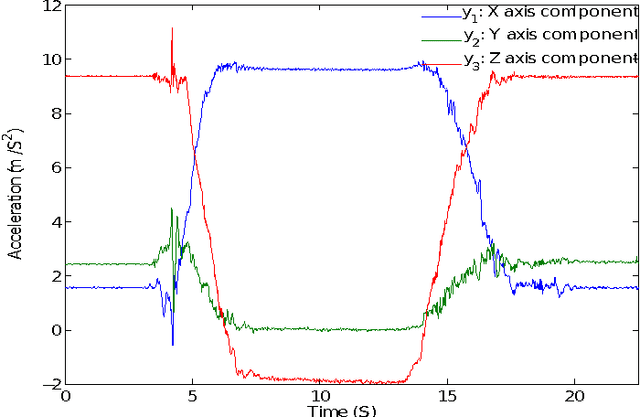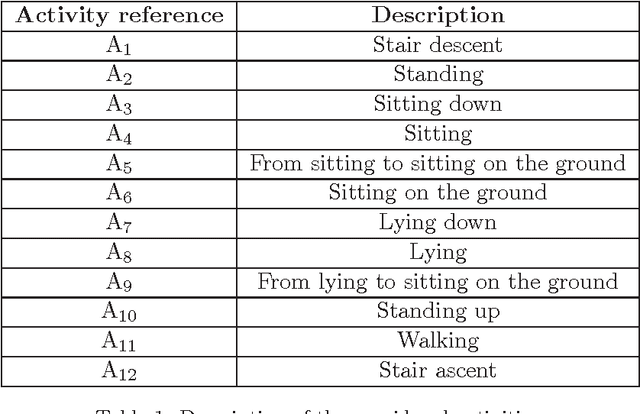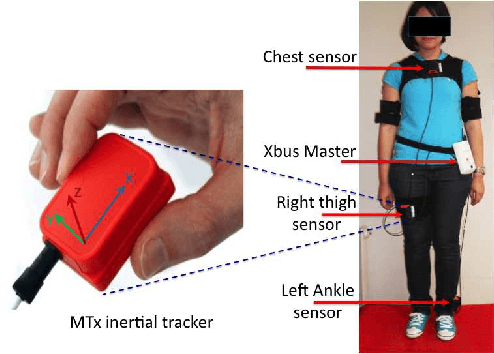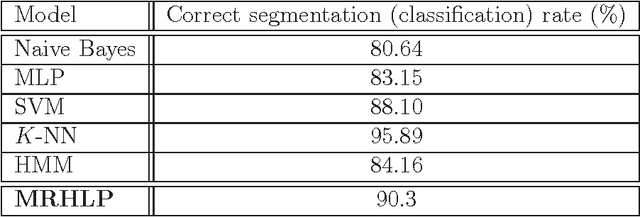Joint segmentation of multivariate time series with hidden process regression for human activity recognition
Paper and Code
Dec 25, 2013



The problem of human activity recognition is central for understanding and predicting the human behavior, in particular in a prospective of assistive services to humans, such as health monitoring, well being, security, etc. There is therefore a growing need to build accurate models which can take into account the variability of the human activities over time (dynamic models) rather than static ones which can have some limitations in such a dynamic context. In this paper, the problem of activity recognition is analyzed through the segmentation of the multidimensional time series of the acceleration data measured in the 3-d space using body-worn accelerometers. The proposed model for automatic temporal segmentation is a specific statistical latent process model which assumes that the observed acceleration sequence is governed by sequence of hidden (unobserved) activities. More specifically, the proposed approach is based on a specific multiple regression model incorporating a hidden discrete logistic process which governs the switching from one activity to another over time. The model is learned in an unsupervised context by maximizing the observed-data log-likelihood via a dedicated expectation-maximization (EM) algorithm. We applied it on a real-world automatic human activity recognition problem and its performance was assessed by performing comparisons with alternative approaches, including well-known supervised static classifiers and the standard hidden Markov model (HMM). The obtained results are very encouraging and show that the proposed approach is quite competitive even it works in an entirely unsupervised way and does not requires a feature extraction preprocessing step.
 Add to Chrome
Add to Chrome Add to Firefox
Add to Firefox Add to Edge
Add to Edge